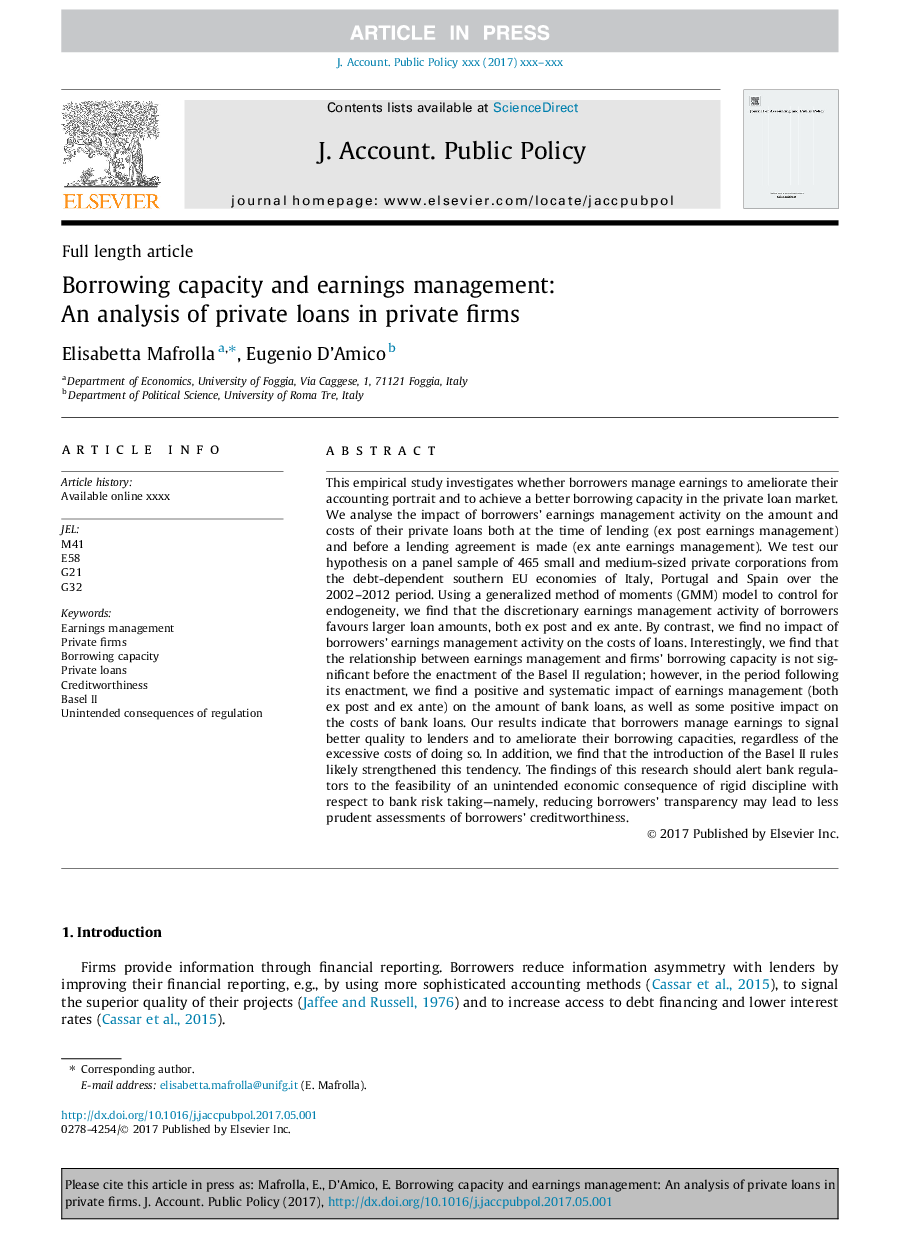ترجمه فارسی عنوان مقاله
ظرفیت بدهی و مدیریت درآمد: تجزیه و تحلیل وام های خصوصی در شرکت های خصوصی
عنوان انگلیسی
Borrowing capacity and earnings management: An analysis of private loans in private firms
| کد مقاله | سال انتشار | تعداد صفحات مقاله انگلیسی |
|---|---|---|
| 102657 | 2017 | 18 صفحه PDF |
منبع

Publisher : Elsevier - Science Direct (الزویر - ساینس دایرکت)
Journal : Journal of Accounting and Public Policy, Volume 36, Issue 4, July 2017, Pages 284-301

